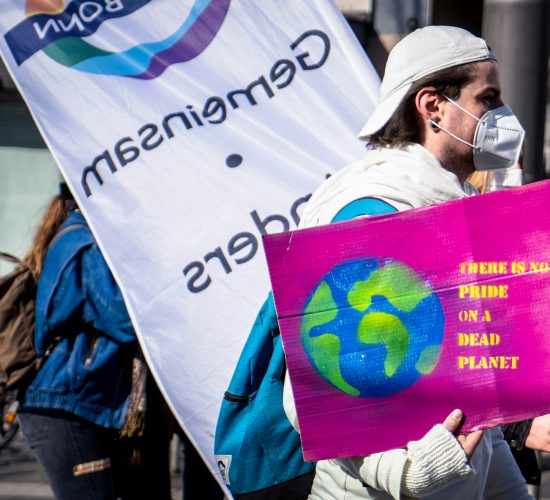Pandemic Pause: Examining Climate Change Shifts During the Global Slowdown

The COVID-19 pandemic brought the world to a standstill, significantly reducing industrial activity, transportation, and energy consumption. As a result, global carbon emissions temporarily declined, offering a unique opportunity to observe the impact of human activities on the environment. This “pandemic pause” provided a rare glimpse into the potential for reversing climate change, but it also highlighted the complexities of our relationship with the planet. This article explores the shifts in climate patterns during the global slowdown, the temporary nature of these changes, and the lessons we can learn for future climate action.
Temporary Decline in Emissions and Air Quality Improvements
One of the most immediate and visible effects of the pandemic-induced slowdown was reduced greenhouse gas emissions. As countries imposed lockdowns and restrictions, industrial production plummeted, and transportation networks ground to a halt. According to studies, global carbon dioxide (CO2) emissions fell by approximately 7% in 2020, the largest drop in history.
In tandem with the drop in emissions, many cities worldwide experienced significant improvements in air quality. With fewer vehicles on the road and reduced industrial activity, nitrogen dioxide (NO2) and particulate matter (PM2.5) decreased, leading to clearer skies and cleaner air. Cities such as Delhi, Los Angeles, and Beijing, which are often plagued by smog, saw dramatic reductions in air pollution. These improvements not only underscored the impact of human activity on air quality but also provided a stark reminder of the health benefits of reducing emissions.
The Resilience of Climate Systems and the Limits of Short-Term Gains
Despite the temporary reductions in emissions and the visible improvements in air quality, the pandemic pause did not significantly alter the trajectory of climate change. While the drop in CO2 emissions was notable, it was not enough to reverse the long-term accumulation of greenhouse gases in the atmosphere. The concentration of CO2 continued to rise, albeit at a slightly slower pace, highlighting the resilience of the climate system to short-term fluctuations in emissions.
Moreover, the reductions in emissions during the pandemic were not sustained. As economies began to recover and restrictions were lifted, emissions rebounded quickly, returning to pre-pandemic levels by late 2020 and early 2021. This rapid rebound underscored the limitations of temporary reductions in emissions and the need for sustained, long-term efforts to achieve meaningful climate goals. While instructive, the pandemic pause demonstrated that short-term gains are insufficient to address the underlying drivers of climate change.
The Role of Behavioral Changes and Technological Shifts
The pandemic also revealed the potential for behavioral changes and technological shifts to contribute to climate action. During the lockdowns, many people adopted new habits, such as working from home, reducing travel, and relying more on digital communication. These changes led to a decrease in energy consumption and transportation emissions, suggesting that shifts in behavior can play a role in reducing our carbon footprint.
However, the pandemic also highlighted the need for structural changes to support and sustain these behavioral shifts. For example, while remote work became more common, it was not universally accessible, and many industries could not adapt. To achieve lasting reductions in emissions, there is a need for investment in infrastructure, such as public transportation, renewable energy, and energy-efficient buildings, that can support a low-carbon lifestyle.
The Importance of Resilience and Adaptation in Climate Strategy
The pandemic pause also underscored the importance of resilience and adaptation in climate strategy. The global slowdown exposed vulnerabilities in our economic and social systems and the interconnectedness of human and environmental health. As climate change intensifies, these vulnerabilities will likely exacerbate community risks worldwide.
Building resilience to climate impacts requires a multifaceted approach that includes reducing emissions and adapting to the changes that are already occurring. This includes investing in infrastructure that can withstand extreme weather events, protecting ecosystems that provide critical services, and ensuring communities have the resources to cope with climate-related challenges. The lessons learned during the pandemic can inform efforts to build more resilient societies better equipped to navigate the uncertainties of a changing climate.
Lessons for Future Climate Action
The pandemic pause offered a brief glimpse into a world with reduced emissions and cleaner air, but it also highlighted the challenges of achieving sustained climate progress. The temporary nature of the emission reductions and the rapid rebound in activity underscore the need for comprehensive and sustained efforts to address climate change. This includes reducing emissions through behavioral and technological changes and addressing the structural factors driving our reliance on fossil fuels.
One key lesson from the pandemic is the importance of integrating climate action into broader economic and social strategies. As the world seeks to recover from the pandemic, there is an opportunity to build back better by prioritizing investments in clean energy, sustainable infrastructure, and green jobs. By aligning economic recovery efforts with climate goals, we can create a more sustainable and resilient future for all.
The pandemic pause provided valuable insights into the potential for reducing emissions and improving air quality, but it also revealed the limits of short-term gains. To achieve lasting progress in the fight against climate change, we must take a holistic approach that includes mitigation and adaptation, supported by sustained investments in technology, infrastructure, and community resilience. The lessons learned during this unprecedented period can guide our efforts to create a more sustainable and equitable world for future generations.
Additional Information
- Blogs
- behavioral changes, industrial activity, sustained investments
- David Hastings